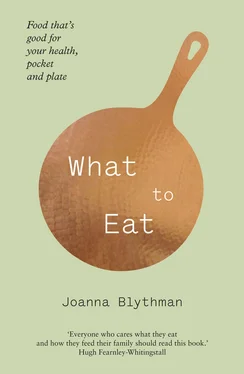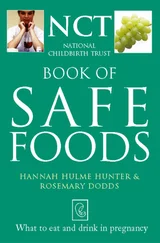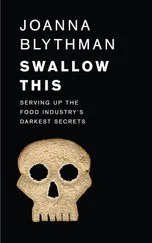A body of research suggests that high-fructose corn syrup, also known as corn sugar and glucose fructose syrup, a very modern ingredient now found in many soft drinks and a growing number of both savoury and sweet processed foods, is even more damaging to health than refined cane or beet sugar. Deeply implicated in the rise in obesity in the US, it is best avoided absolutely.
Don’t imagine that artificial sweeteners are better because they contain fewer calories. There is already research that suggests that these novel chemical concoctions actively encourage, not discourage weight gain. It looks likely that they will turn out to be very bad for us indeed, even worse than standard table sugar. Why give them the benefit of the doubt?
Fresh fruits contain a lot of natural sugar, but they also contain a number of phytochemicals, similar to those found in vegetables, that are thought to be extremely beneficial. So the sugar in fruit is not something to get worried about, unless you eat vast quantities, or are trying to control your weight.
All carbohydrate foods have the capacity to disrupt blood sugar levels. In their whole, unprocessed forms they at least contain some useful amounts of vitamins. But over-consumption of refined carbohydrates, such as white pasta, flour, rice, couscous and sugary drinks, is increasingly coming into the frame as being more fattening than fat, another probable cause of the obesity epidemic that is sweeping through affluent countries.
Make time to sit down at a table and eat meals
Satisfying your appetite is not just about what you eat, but also about how you eat. Sometimes the pace and pressures of modern life make us overlook this. If you bolt down food on the hoof, on your lap, upright in the kitchen, in bed or at your desk, your stomach may feel satisfied, but your brain and your emotions most certainly will not. If you make time – even just fifteen minutes – to sit down and eat a meal at a table, taking long enough to appreciate what’s on your plate, then your brain has the time to register that your stomach is full. Rushing food inevitably leaves you feeling psychologically unsatisfied by what you have consumed. In this state, you will be much more tempted to eat the next thing that comes into view and graze your way to obesity.
In all food cultures and over thousands of years, a certain ceremony and ritual has grown up around the whole business of eating. This is no accident. The act of eating is about more than simply filling the stomach. Meals have the capacity to make us feel nurtured, to nourish us emotionally and promote a sense of contentment that goes beyond any purely physical measure of wellbeing. If you can share meals with family and friends, then the pleasure of eating is further enhanced. But if you can’t, treat yourself like a worthwhile member of the human race anyway, and sit down to eat a meal at a table.
Boycott factory-farmed meat, poultry, eggs and dairy
Factory-farmed meat comes from livestock kept indoors in cramped, insanitary circumstances that create huge animal suffering. Factory farms are also incubators for diseases that affect animals and which can, in certain circumstances, spread to humans.
Factory-farmed animals are fed on vast quantities of cereals. These feedstuffs could be used more efficiently and less wastefully to feed humans directly. The planet simply cannot continue to produce meat, milk and eggs by rearing livestock in this way.
The availability of cheap, factory-farmed meat has encouraged many people to eat much more meat, poultry and dairy products than is good for health and to see large daily amounts as some sort of democratic entitlement. An overabundance of animal-derived foods in the diet isn’t healthy and, unless you are prepared to pay a small fortune, insisting on such quantities will necessarily mean that you end up eating cheap, inhumanely and unsustainably produced foods from miserable factory-farmed animals.
If you want to eat meat, poultry, eggs and dairy foods, buy less of them but maintain your spend by trading up to buy higher welfare, more extensively farmed, free-range, grass-fed products.
Adopt a ‘closest to home’ buying policy
It makes sense to favour food produced close to home. Of course, just because a food is locally produced doesn’t mean it’s good. A local chicken can be factory-farmed. The local baker can make lousy bread. But all other things being equal – the product tastes good and it has been humanely and ethically produced – then your food will automatically be fresher and more seasonal, and considerably less trauma will be inflicted on the environment in its transportation. The shorter the distance that food travels, the less energy is used. Transport relies heavily on oil, which is a rapidly depleting, non-renewable resource. A reduction in transport also helps bring down carbon emissions. By eating more local food, you can substantially reduce your carbon ‘foodprint’.
The money you spend on local food will support and encourage our native food producers, which strengthens communities and the economy and helps build our self-sufficiency in food. At the moment, we produce only 58 per cent of the food we eat, not a great situation to be in when we face a future where there will be more competition for globally sourced food resources and the energy costs of bringing imported foods to our shores will become greater and greater.
The supermarkets’ policy of treating the planet like one big global shopping basket has created a bizarre situation where many of us eat little or no local or regional food, and surprisingly small quantities of nationally produced food, even though we live in a rich and productive land and ought to be more or less self-sufficient. With the world’s population set to grow by 50 per cent by 2050, and global warming and a shortage of oil putting pressure on the world’s ability to feed itself, this dependency on imported food looks increasingly reckless. There is something fundamentally unsound about relying on faceless producers in faraway places to keep us fed, people who owe us nothing. Instead we need to make the country more resilient by buying more food that’s grown here, not flown or shipped here. What on earth are we doing eating Brazilian chicken, Dutch carrots, Danish pork or New Zealand onions? Are we crazy?
Another bonus of buying local food is that the production process – everything from the welfare of animals to the treatment of workers – will be much more transparent than that of foods that have travelled thousands of miles through the multiple links in an opaque supply chain. Let’s face it, shining a light into the dark highways and byways of industrial farming and food production is hard enough even within these shores. Suffice it to say that factory farms and food-manufacturing plants here don’t go out of their way to welcome us in for ‘Doors Open’ days. So what chance do we have of knowing what’s really going on in similar operations thousands of miles away?
Of course, we have been eating imported foods for centuries, and only the most pleasure-denying, hair-shirt-wearing eco-fanatic would seriously suggest that imported foods have no place on the plate. No chocolate? Or lemons? Unthinkable. Obviously, there is a list of foreign ingredients that few of us would like to live without, such as spices, olive oil, avocados, citrus fruits, cocoa, bananas and rice. We can’t produce them, and they enliven our diet immensely. These foods are not usually air-freighted, but generally shipped or trucked. There is no need to forgo them. Even those that are transported by air – Indian mangoes or lychees from Mauritius for instance – can have a small place in the diet as an occasional, exotic indulgence.
But then there are foods that we are perfectly able to grow or farm here, at least for some part of the year, but which are routinely brought in from all over the globe via a convoluted cold chain: fruits and vegetables such as green beans, blueberries, asparagus; and meat and dairy products such as lamb, pork, chicken and yogurt. There’s no need to have such foods supplied from abroad and their air-freighting, shipping and trucking, with its energy-intensive cold chain, is undeniably environmentally destructive. They almost invariably taste inferior to the native equivalent too.
Читать дальше












